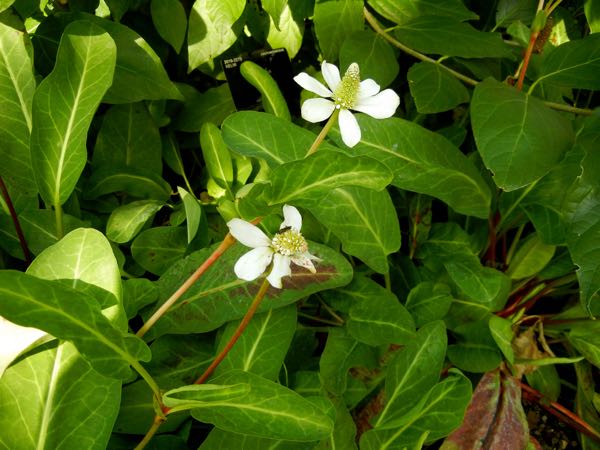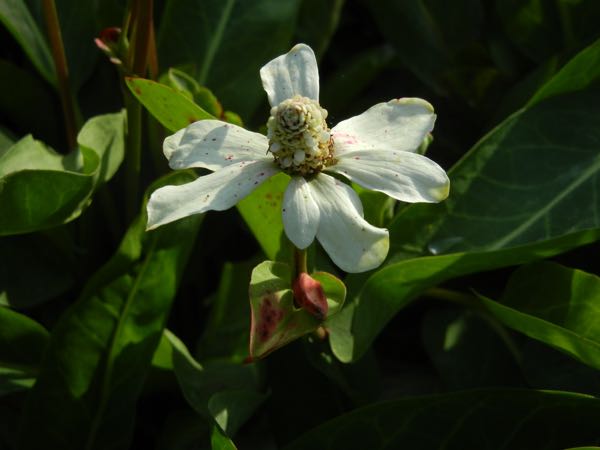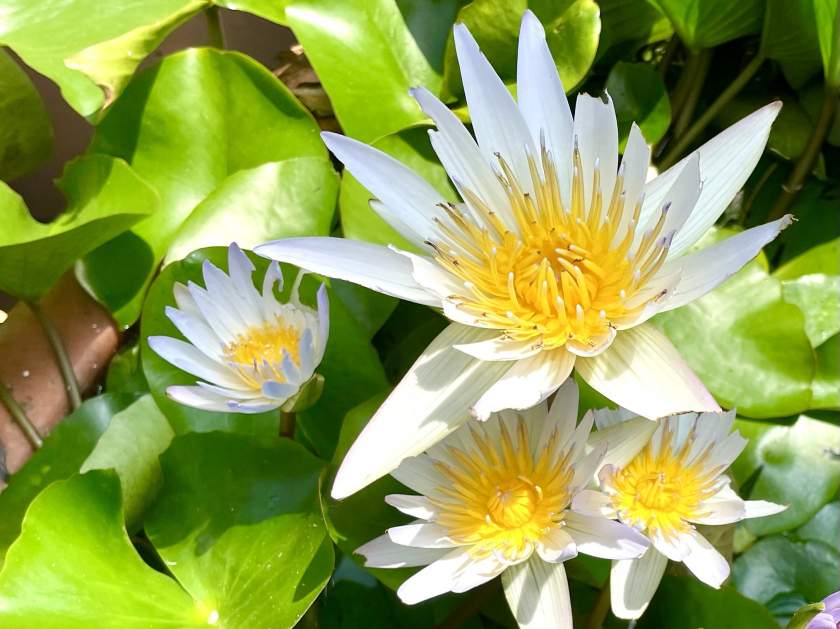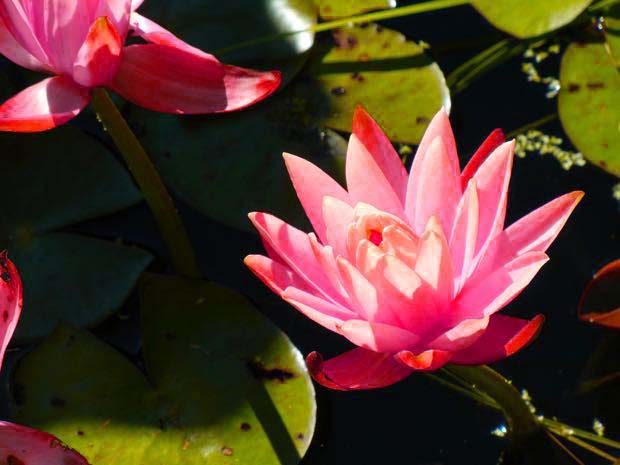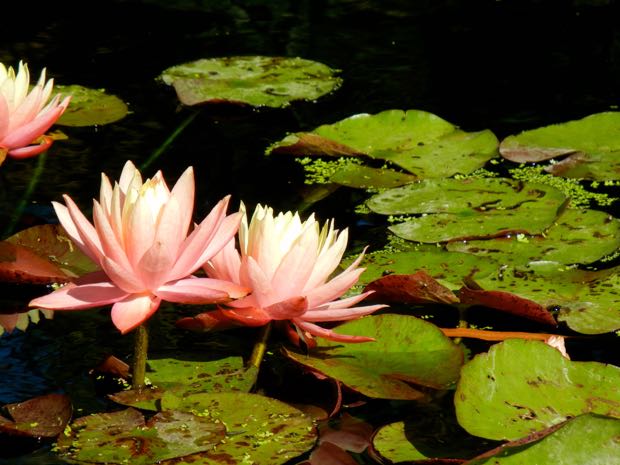Anemopsis californica: Unveiling the Allure of Yerba Mansa
Anemopsis californica, commonly known as Apache beads, Yerba Mansa, or Lizard Tail, belongs to the esteemed Saururaceae family of plants. This perennial beauty thrives in moist, boggy soil or shallow water, making it a popular choice for marginal aquatic gardens. Known for its vigorous spread through runners, Anemopsis californica exudes a sense of resilience and natural charm.
Origin and Discovery: Tracing the Roots of Anemopsis californica
Native to North America, Anemopsis californica captivates with its clump-forming leaves and large white flowers. The plant blooms from July to September, with the flowers adorned in spots or shades of pink, adding a touch of elegance to its appearance. This captivating species first caught the attention of botanical enthusiasts and explorers, drawing appreciation for its unique characteristics and versatility in garden settings.
Characteristics and Description: A Tapestry of Fragrance and Beauty
Anemopsis californica boasts a distinctive combination of features that contribute to its overall allure. Let’s explore its key characteristics and detailed description.
Leaves: The grey-green leaves of Anemopsis californica measure approximately 8 inches or 20 centimeters in length. These fleshy leaves enhance the plant’s visual appeal, serving as a backdrop for its stunning flowers.
Flowers: Tiny and fragrant, the flowers of Anemopsis californica are surrounded by large white bracts, giving the appearance of a cluster of small individual flowers arranged in a conical inflorescence. The cone-like structure undergoes a transformation, developing into a tough fruit after the flowering stage. Notably, the plant takes on red tints as it matures, intensifying in colder weather. The seeds of Anemopsis californica are pepper-shaped, adding a unique element to its reproductive cycle.
Aroma and Medicinal Uses: Anemopsis californica, also known as Yerba Mansa, possesses remarkable antimicrobial and antibacterial properties. The plant’s roots, known for their strong, spicy, musty scent, have been utilized in traditional medicine. Yerba Mansa is often prepared as tea or powder into capsules, offering various health benefits. The dried flowers of Anemopsis californica exude a pleasant aroma, further enhancing its allure.
Flowering Season: Anemopsis californica graces gardens with its exquisite blooms from late spring to summer, creating a visual spectacle and captivating all who behold its splendor.
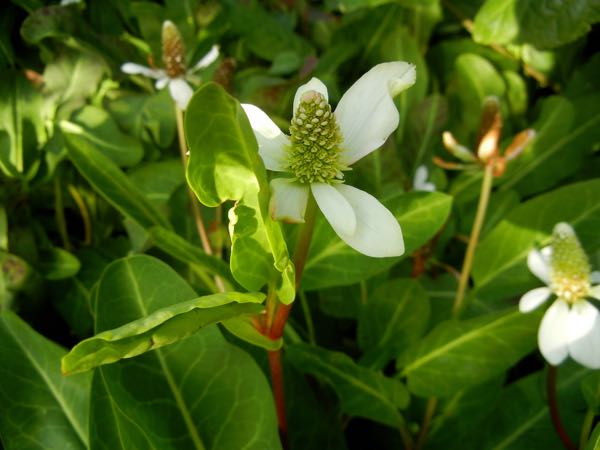
Cultivation: Nurturing Anemopsis californica in Your Garden
Cultivating Anemopsis californica requires attention to specific environmental conditions to ensure optimal growth and abundance. Let’s delve into the key aspects of its cultivation.
Sunlight: Anemopsis californica exhibits remarkable adaptability and can thrive in both full sun and partial shade. However, to prevent leaf scorching, it is advisable to provide partial shade, especially in regions with intense sunlight.
Watering: Yerba Mansa, known for its drought tolerance, does not require frequent watering. It is best to water the plant deeply when the soil feels dry to the touch, ensuring adequate moisture without waterlogging.
Soil: Anemopsis californica demonstrates versatility in soil adaptability, although it prefers well-drained soil conditions. If you choose to plant it in a container, select a potting mix specially formulated for succulents or cacti, offering optimal drainage.
Fertilizer: Anemopsis californica thrives without frequent fertilization. A light application of fertilizer in the spring can stimulate new growth and promote overall plant health.
Pests and Diseases: This resilient species exhibits remarkable resistance to pests and diseases. However, in dry air conditions, Anemopsis californica may be susceptible to spider mites. Promptly address any signs of pests or diseases by employing suitable insecticides or fungicides to maintain the plant’s health.
Propagation: Anemopsis californica can be propagated through two primary methods: seed propagation and division. To propagate through seeds, sow them in well-drained soil within a pot during the spring, and expect germination within 2-4 weeks. Alternatively, division can be performed in either the spring or fall, ensuring that each division has a minimum of 3-4 roots.
Embracing Anemopsis californica: A Native Delight
Anemopsis californica, with its captivating features and adaptability, serves as an enchanting addition to gardens. Whether accentuating a pond, stream, or bog garden, this resilient species forms a dense, large colony, creating a beautiful carpet-like effect. Its medicinal properties and aromatic appeal further elevate its desirability, making it an intriguing choice for botanical enthusiasts and those seeking a touch of nature’s healing touch.
A Gift from the Southwest: Exploring Anemopsis californica‘s Native Origins
As a testament to its unique beauty, Anemopsis californica originates from southwestern North America and adjacent areas of Mexico. Its presence in these regions highlights its adaptability to specific climates and adds a touch of regional charm to any garden setting.
